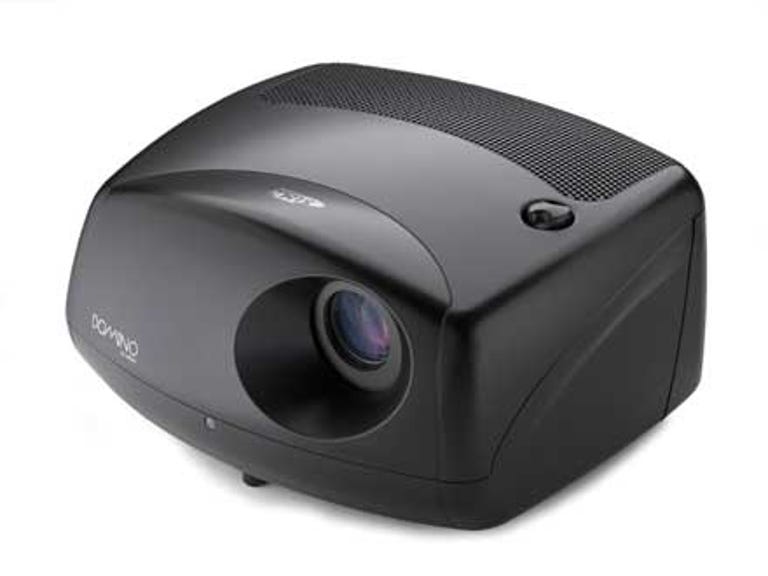 Why You Can Trust CNET
Why You Can Trust CNET Sim2 Domino 80 review: Sim2 Domino 80
Its price point will put it beyond the reach of many, but the D80 projector can be summed up in one simple word. Wow.
Design
What will thirteen grand buy you? Well, it might just pick you up a very low-end, budget model car. It could be the start of a deposit towards a very small house in bad part of town on the edge of the middle of nowhere. Or, alternatively, it could be the exact asking price of Sim2's Domino 80 projector. That price tag alone may be enough to deter many purchasers -- and for comparative reference purposes, you could buy more than fifteen uber-cheap Viewsonic PJ350D projectors with that kind of money, and still have enough cash left over for a good coffee machine and few sacks of coffee too. Of course, the D80 belongs in a class of projector where it wouldn't just sneer at lesser projectors, but also kick perfectly projected mud into their lenses. It's that kind of projector. If you can't afford it, the D80 figures, then just move on, and please don't leave grubby fingerprints on the trim.
The Good
The Bad
The Bottom Line
The D80 itself is a moderately chubby projector, measuring in at 17.4 x 35.1 x 31.8cm, with a carrying weight of 5kg. Not that this is a projector that's particularly pitched at the portable market; this is much more an "install once, enjoy in a fixed position" style of machine. It's also not a projector that makes much of stylised fins, dashing lines or ostentation in its design, either -- if one wanted to be unkind, we'd say it's rather squat. Sim2 provides the D80 in either a matte black or white finish.
Other than the projector, all you'll find in the box, aside from an installation manual, is a simple remote control and a standard power cable; no AV cables are provided. Then again, if you can afford $12,000 for a projector, presumably you're unlikely to worry about the cost of extras.
Features
The D80 uses Texas Instruments' Darkchip 3 to handle its projection duties. It's a single chip DLP model with a 7 segment colour wheel, a claimed contrast ratio of 4000:1 and a native resolution of 1920x1080, making it capable of displaying any given resolution you'd care to throw at it, along with any picture standard to boot. Connectivity runs the gamut from composite video all the way up to HDMI, although DVI is absent except via an HDMI adaptor. HDCP is supported through the HDMI socket. A single digital audio output socket is your only concession to audio matters, to cover those running audio through HDMI who need it to then shift out somewhere else so it can be heard. The 160W lamp on the D80 is rated for 4000 hours of operation by Sim2.
The D80 uses Sim2's ALPHAPATH Light Engine, which, according to Sim2's claims, protects the projected light within the projector body from outside luminance contamination, leading to claimed better black levels and less need for ventilation within the unit -- which means a quieter projector.
Performance
The D80 was tested with a variety of AV sources to put it through its paces, although it's very clear that anyone genuinely in the market for projectors at this price point -- and this is still a somewhat entry-level HD projector -- won't be dallying much in the SD world.
HD material, tested via Blu-Ray -- we concentrated mainly on the Blu-Ray version of Casino Royale and a Blu-Ray test disc playing through a Playstation 3 -- came out brilliantly through the D80, even during fast action scenes. If there was even a trace of rainbow effect to be seen within the movie, we didn't spot it, and likewise it did a sterling job presenting games through our test PS3 console.
We were somewhat amused by the concept of plugging in the cheapest thing we could find into the D80's composite input, just to see how it would handle the upscaling. In the end, we opted for a classic Nintendo Entertainment System and a creaky Sony VHS deck.
Predictably, coming off a feast of HD entertainment, the results were somewhat jarring, although the D80 did try its best. We're willing to bet that nobody else actually buying a D80 will try that particular test. For the record, the original Super Mario Brothers still looks blocky, especially on a 100" display. No matter what we threw at the D80, it projected it faithfully and surprisingly quietly to boot.
The D80 is an excellent projector, and our main concerns are really very minor. At full 1080p resolution we did find some menu choices a little tough to read due to their small size, but then this is a projector that clearly deserves to be calibrated and then left alone unless like us, you can't resist tweaking. The lack of a DVI port -- or for that matter additional HDMI ports -- limits the ability to plug in multiple input sources with true HD fidelity, which is mildly irksome. The price of the D80 will not so much be a stumbling block for many as much as it will be a full-scale impenetrable fortress of cost, but if you're in the income bracket and interest group for a truly exceptional HD projector, then the D80 is certainly worthy of consideration.


